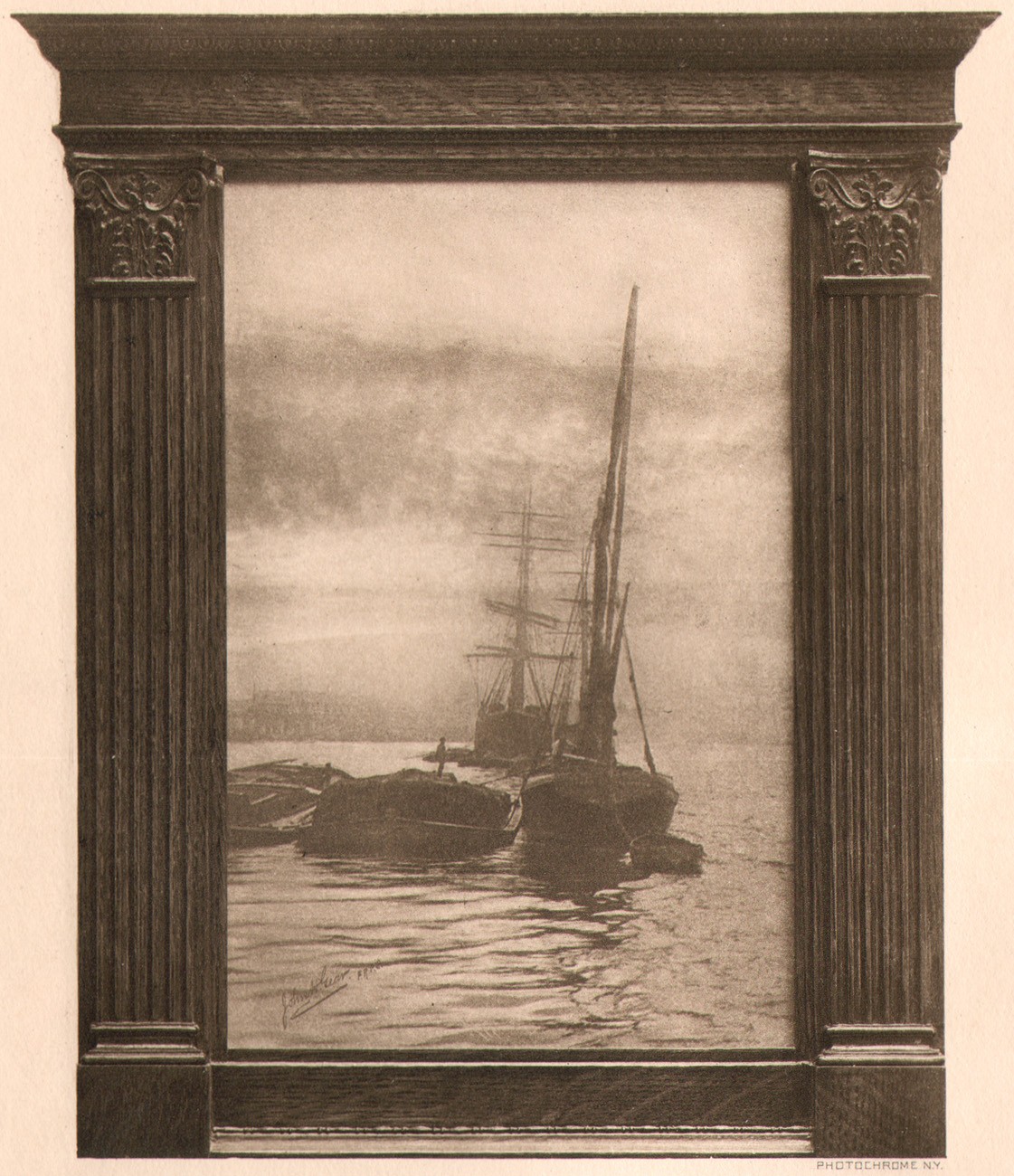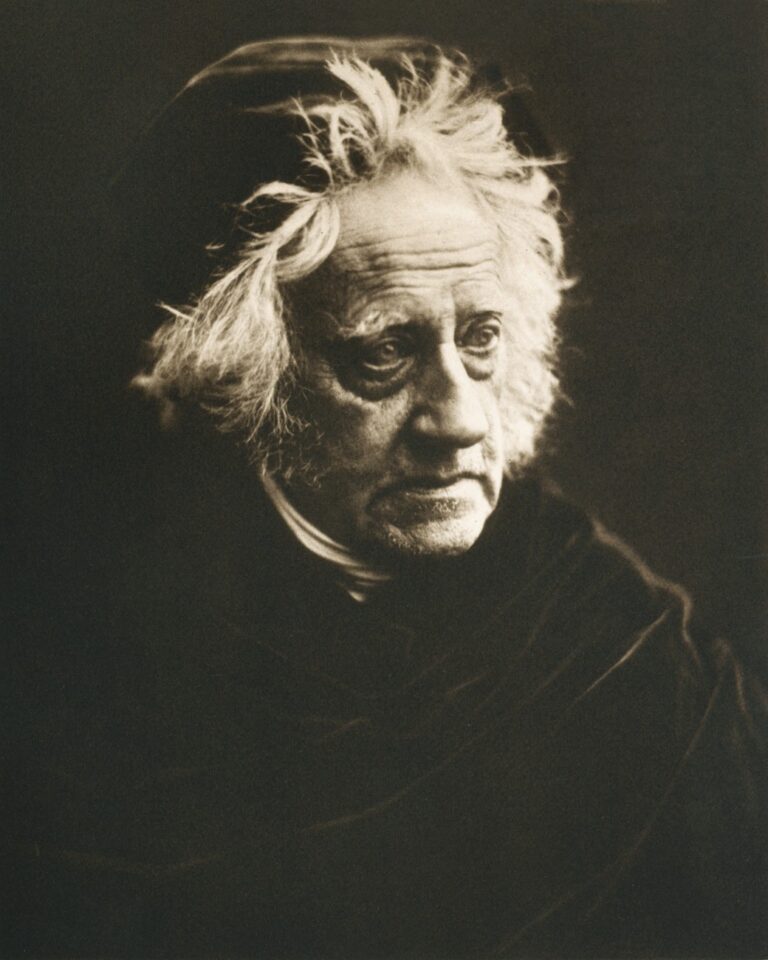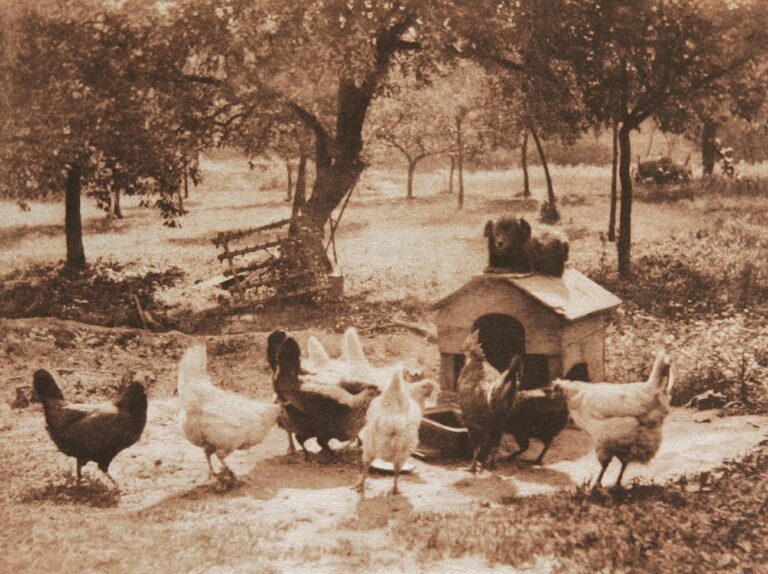
Twixt Night and Day
Twixt Night and Day dates to 1896, with another version published in 1897: Abendschatten (Evening Shadows) on this site. Editorial comment supplied opposite this frontis gravure for the June issue goes into length on how Gear found “the picture” within what would have been an ordinary snapshot. The presentation of the photograph is further enhanced within an elaborate wood frame by the New York City framer and artist George Of. Further background on Of also appeared later in the issue.
Editorial comment on this plate:
IT is certainly a remarkable fact that few users of the hand camera ever realize the possibilities of improving upon the results they obtain by simply developing and printing from the negative obtained. As an instance of what can be done we refer our readers to the cut below. This is a print from the original snapshot made by Mr. John H. Gear. Mr. Gear was not satisfied, as many would be, to make a print upon glossy paper, paste it in an album and label it “On the River,” or some such title, so that the spectator would not mistake it for a landscape. He wanted a picture, and, being a man of artistic feeling, and understanding the technical side of photography, he got it, as will be seen by a glance at the frontispiece of this issue. This result is obtained first by carefully selecting the best part of the picture and enlarging the same to suitable dimensions; a rough paper was used, and a cloud effect worked in so as to give the effect the author desired, as shown by his title, “Twixt Night and Day.”
Attention is also called to the striking improvement made in trimming, nearly two-thirds of the picture being cut away. Note, too. how the insertion of a suitable cloud effect lifts a purely topographical subject from its mediocral stage. (p. 241)
From the Notes and News section:
An Artistic Frame-Maker.—It may interest our readers to know that Mr. George F. Of, of 66 East Eighth Street, New York, is the manufacturer of the frame reproduced in our frontispiece. Mr. Of has long held the reputation of being something more than a mechanical frame-maker. His artistic judgment can always be relied upon. (p. 281)
George Of, a modernist painter himself and a close friend of Alfred Stieglitz’s, was principal framer at Stieglitz’s gallery, 291. (from: Art Institute of Chicago website- 2012)
Original copy for this entry posted to Facebook on November 15, 2012:
Gilding the lilly with respect to art has a long history in the ranks of frame-making. The appropriate presentation of pictorial photography was no different in the early 20th century, with masters such as New York City framer George Of (1876-1954) gaining a stellar reputation by supplying his creations to photographers as well as artists represented by Alfred Stieglitz’s 291 gallery. Although not a member of the Photo-Secession, Englishman John Gear’s marine study is set off here within this classical Greek revival Of frame, probably made from oak. The frame appears photographed separately and seamlessly combined with the image by the Photochrome Engraving Company.



